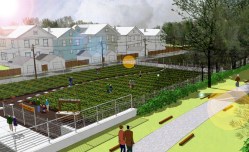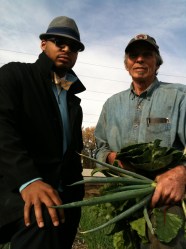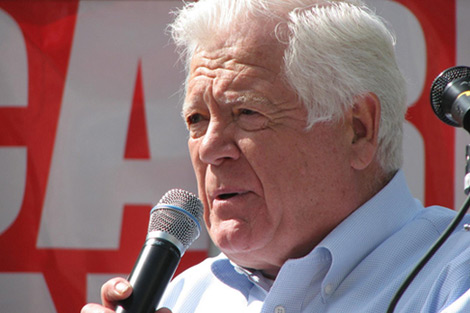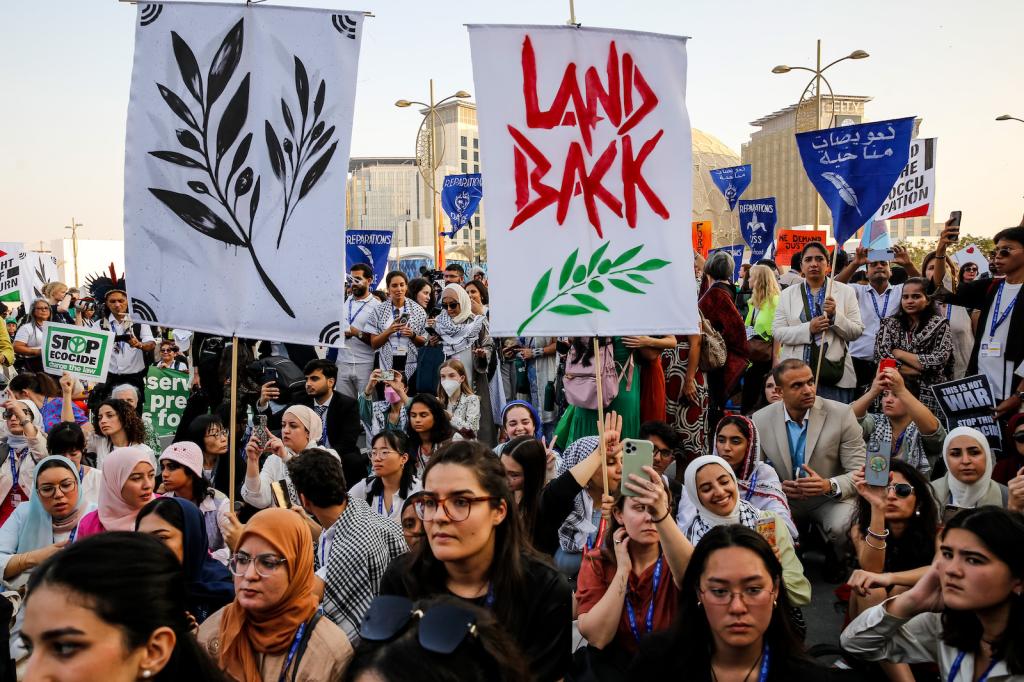
A rendering of the planned urban farm district, which would run along the Chicago’s New ERA Trail.
Chicago’s Black Belt area, on the historic South Side, was once a hub for jazz, blues, and literature, but today is riddled with vacant lots, poverty, and blight. Now, a new plan envisions the area as a thriving urban farm district.
In the coming weeks, the city’s planning department is expected to approve the creation of a green belt with a strong focus on urban agriculture within the neighborhood of Englewood. The plan is an element of Chicago’s Department of Housing and Economic Development’s (DHE) Green Healthy Neighborhoods initiative, designed to shepherd and foster redevelopment in 13 square miles of the South Side. Years of disinvestment and population decline have left the area riddled with 11,000 vacant lots totaling 800 acres.
Peter Strazzabosco, deputy commissioner for the DHE, says that although the plan lays out a district “with a small d,” the city has a deep history in urban planning know-how. He, along with other city officials and community organizers, hope the farm district will help stabilize the South Side by putting vacant land to use and creating entrepreneurial and job opportunities. They also expect it to become a model for other city planners as well as a tourist destination for people interested in farming and growing food.
At the core of the blueprint is the three-mile long New ERA (Englewood Re-making America) Trail, which will serve as the “spine” of the farm district, Strazzabosco says. A former railroad line, the three-mile-long trail will become a linear park with foot and bike trails and farm stands. The area designated as the district begins directly across from the trail, as that’s where an estimated 100 acres of city-owned, vacant parcels are located. Over time, they can be converted into farms and other agricultural projects.
Not only will the farms bring healthy and affordable food to the community, the hope is that they will also create jobs and attract new housing, industry, and businesses. Two half-acre job training farms already exist in the district — Growing Home’s Wood Street and Honore Street farms — as well as the 1.7-acre for-profit Perry Street Farm. All grow seasonal vegetables such as tomatoes, kale, lettuce, and beets. A fourth half-acre educational farm run by the Center for Urban Transformation and Angelic Organics Learning Center will be planted next spring.

Lori RotenberkBrandon Johnson, director of the Washington Park Consortium, and Ken Dunn, farmer for Perry Street Farm.
Farms, however, are just the beginning of an overall urban planning project to rebuild the South Side from ground up. Think of it, says Brandon Johnson, “as a 21st-century community that just happens to have farms.”
Johnson, a public economist, heads the Washington Park Consortium, a neighborhood group made up of civic and business leaders who have been carefully planning the South Side’s future for the last two years.
Johnson and Strazzabosco both hope this effort differs from urban farming initiatives in both Detroit and Cleveland in that the city is not suffering from a collapsed economy.
Chicago, Johnson says, has as much land as either city, but also has transportation clout. Plus, says Orrin Williams, a community-based development strategist with the Center for Urban Transformation, “A 200-year history of outstanding urban planning makes us come at this from a position of strength. Our choice to farm is not an act of desperation.”
“This is not a pie-in-the-sky plan,” says Johnson, explaining that Chicago is not just adding a few farms and calling it a district. “It’s urban planning from the bottom up. It’s a long-range plan to turn a community filled with vacant lots into a community built around agriculture. Think of what Chicago was during the heyday of the (Union) Stockyards when it was the ‘Hog Butcher for the World.’” Only this time it will be built around local produce.
Part of the consortium’s plan is to use the South Side’s strong rail system to distribute Chicago-grown food to the rest of the nation. Johnson and Williams are in discussions with farmers throughout the Midwest as well as farm projects throughout the Rust Belt seeking ways to unify and create a food network.
Last year, the consortium leased 1.7 acres from the city to fund the Perry Street Farm. Johnson hired Ken Dunn, one of Chicago’s top urban growers, to run the farm. Dunn, founder of the recycling and composting facility called the Resource Center, says he will duplicate what he’s done with the farm there, “selling two-thirds or more to high-end restaurants to generate $140,000 of earned income per year.” Proceeds from Perry Street will go toward new farms as well as workforce development.
First, however, the Perry Street farm will feed South Side residents, and shift some portion of the $20 million they are currently spending on food outside the neighborhood to the local economy.
Johnson says the consortium is considering establishing more farms, with the earnings going towards building an urban agricultural infrastructure. Plans for a food distribution center will be unveiled early next year, he adds, and investors are being sought for a processing plant (think pickling).
To help fill the need for trained farmers, the men are working closely with Kennedy-King College and the new Washington Culinary Institute on degree programs associated with agriculture and farming. Restaurants, universities, and hospitals are all potential food and produce customers.
For Washington Park resident Erana Jackson, the shift from vacant lots to small but verdant farms would provide a steady income. Jackson recently finished a certification program in Sustainable Urban Agriculture from the Chicago Botanic Garden, and she dreams of starting a neighborhood food co-operative.
“Turning the South Side into an area centered around farming would bring people food and jobs,” Jackson says. “Most people like the idea and know that it’s about [re-]starting the community from scratch.” She wants to acquire three city lots as an incubator site and find a way to use biomass for energy creation. She hopes to create jobs that will help residents earn a decent income.
“We are living in a food desert,” Jackson says. “With fresh produce we could finally promote healthy eating. People could have their own farm stands. This is how you turn a neighborhood around.”
Of course, not everyone is welcoming the idea of an urban farm district with open arms. Some in the black community have mixed feelings about today’s urban farming.
“Urban farming is a white, liberal, hippie movement that found itself in the black community,” says Johnson. But, he adds, “the black community is seeing the opportunity.”
“Farming will lead the future of the South Side … and we’re calling everyone to the table to help plan,” Williams adds. “Architects, urban planners, soil scientists — everyone working together rebuilding the neighborhoods from scratch.”




